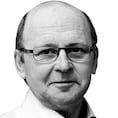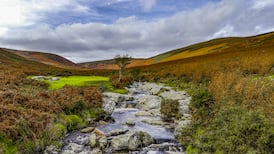A chat with 75-year-old Áine Uí Dhubhshláine on the distinct brand of sustainable living in West Kerry is suddenly interrupted by “did you hear it?” Her question is asked with jubilation.
For the corncrake has returned to An Ghráig near Ballyferriter on the Dingle Peninsula. She thinks it is somewhere between an area which she has rewilded beside Tig Áine, her restaurant and gallery, and Cloghear beach – a contender for the most spectacular view on the western seaboard.
Built using traditional building techniques and set into a hillside, the buildings including her adjoining home are a neat blend with clean energy technology.
“I’m living the dream. I’m 75 per cent retired,” she adds. Her granddaughter Nicole and her partner Kyle – both 27 – have taken over the business.
READ MORE

Her “to do list” on the table – “the 25 per cent work” – could be described as sustainability pursuits, especially sourcing quality local produce to complement their baking, eggs and vegetables.
Uí Dhubhshláine is a firebrand within a “sustainable energy community” (SEC) of more than 120 businesses in tourism/hospitality on the peninsula. It came into existence with the help of Dingle Hub, perhaps best described as a “community enabler”.
While protecting natural assets is essential, she says, knowing your data is critical, when most tourist enterprises “are on a financial knife edge”. Her sustainability journey (in the economic sense too) started with an energy audit that led to rooftop solar with battery backup.
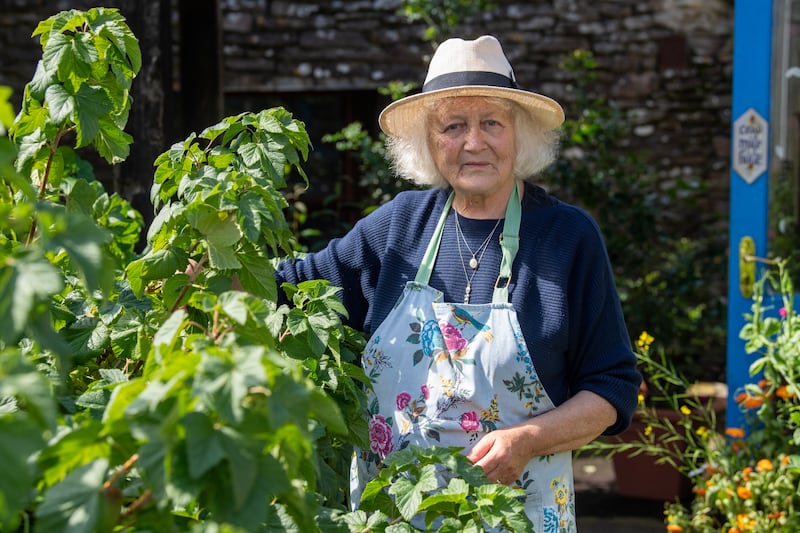
Key to success, she adds, is “attention to details, doing the sums and watching your energy bills”. She can tell her energy consumption at any hour, when excess power is exported back to the grid and how much she is getting paid for it. It got to the point of running the car on solar. “It was kind of magic”.
Tourism and hospitality SEC co-ordinator Ann Ní Chíobháin says the days of local “people in the food business giving out about having no profit margin when they didn’t know what their energy bills were” are over.
And there is greater understanding that tourists want to help maintain the local environment and contribute to a viable local society – while learning the odd Irish word in the Corca Dhuibhne Gaeltacht.
In supporting companies pursuing clean energy technologies, it enables other businesses in their sector to become more sustainable, notably in tourism. Dingle Linen Service provides a seven-day cleaning service to hotels, guesthouses, B&Bs and self catering accommodation throughout much of Kerry.
From a small laundry in 2017, it has moved to a former nightclub in Dingle. Now employing 16 people in a completely refurbished premises, it maximises use of Solar PV which has dramatically reduced its energy costs.
Though its use of intensive heat for drying and lint pose a fire risk, limiting their options, it has maximised energy efficiency in its large washing machines and ironing machines – compared to an individual accommodation business, says group operation manager Daniel McCarthy.
“We are helping businesses to meet their sustainability obligations. Our prices have been static for three years. And [renewable] energy is helping to do that,” he adds.
Within a year, he expects to have heat transfer technology in place to provide all their hot water needs and to have all electric vehicles on the road.
Dingle Hub came into being in 2016. Driven initially by Enterprise Ireland funding, it expanded through multiple partnerships and funders, at local, national and EU levels. A platform for action across the peninsula was made possible by Sustainable Energy Authority of Ireland support for drawing up an “energy master plan”.
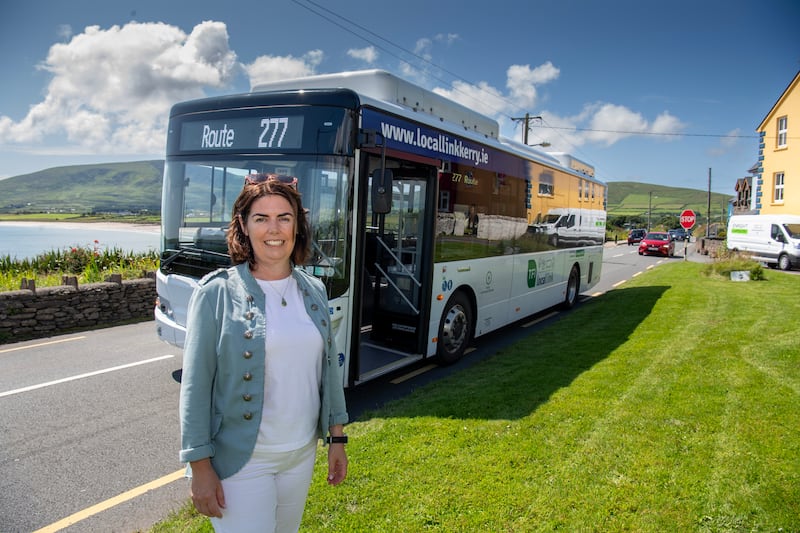
Hard data is its north star; the basis for action and winning over locals, says Dingle Hub manager Deirdre de Bhailís.
It may have entailed pursuing renewable energy options initially (informed by findings from the MaREI Research Ireland Centre for Energy, Climate and Marine at University College Cork), but soon extended to sustainability in a broader sense; the way land was farmed and food was produced – and then tied into changing transport behaviours, all the while building resilience to climate change.
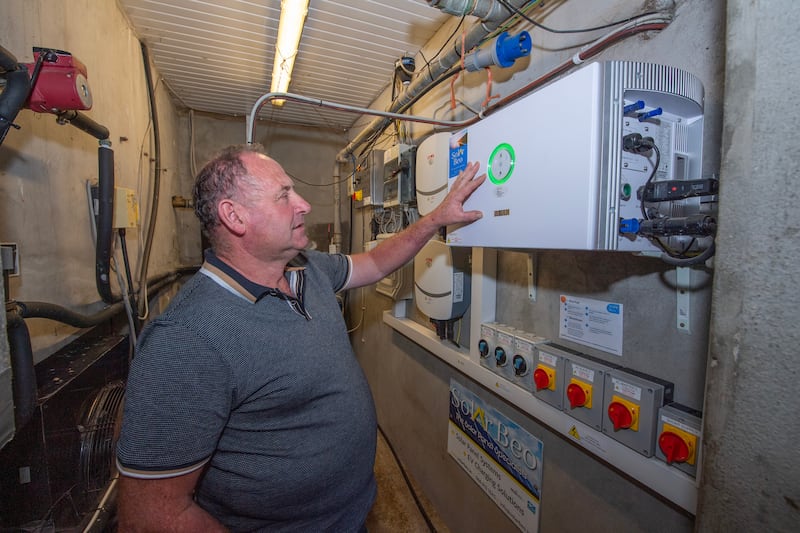
Farming was the area’s first sustainable energy community – the novel concept of “a sectoral SEC”. Intensive dairy farmer Dinny Galvin from Lispole overlooking Dingle Bay became its chairman and champion.
Soon 106 farmers joined the ranks of West Kerry Dairy Farmers SEC, while an unusual dynamic resulted with staunch environmentalists and artist Lisa Fingleton, who is from a farming background, “in the room”.
Hub engagement and event coordinator Catríona Fallon says the idea was for a creative project, hoping it might spark people’s imagination in a way a webinar might not. “There was a perception that there is an increasing divide between environmentalists and farmers; we wanted to address that.”
They built “trusted relationships”, helped by visits to places where nature and farming were in better balance. Knowing farmers are problem solvers, they devised solutions for protecting biodiversity, “helping participants recognise the value they provide”, while retaining focus on profitability.
With Creative Ireland funding, the project worked with 10 farming families in exploring ways to diversify and make their farming practices more sustainable.
Galvin describes himself as “a lost engineer”. He has a heat recovery system, so renewable technology ensures hot water for sterilisation and cools milk with “massive savings” on electricity costs. “For the past two months, I’m in credit, which is incredible. There’s no excuse for wasting heat. Why would you be giving it back to the atmosphere?”
His energy consumption figures come via mobile phone app. “It tells me exactly what’s happening. I find that to be wonderful.”
About 60 farmers in the group have installed solar panels on their farm buildings. Their contract went to tender, local company Solar Beo won out and collectively they are saving €650,000 a year in energy costs. It provides hyperlocal energy security.
Solar Beo emerged from a local electrical company of just two people – brothers Pádraig and Ciarán Ó Murchú – and developed into a renewables installer employing more than 20 people.
Galvin is milking 40 cows and keeps a flock of mountain sheep. His farm is a living lab open to researchers and farmers. The land ranges from commonage to improved peatland to permanent pasture. Hardy sheep are outdoors for most of the year, helping to manage diverse pasture on commonage.
He has set aside 1.5 acres for pollinators. To reduce artificial nitrogen fertiliser, he reseeded grassland with clover and other species. Together, they planted more than 6,500 trees and extensive hedgerows this year.
Galvin says he has always wanted to reduce the farm’s carbon footprint, realising a disturbed climate is forcing change. This means erratic growing seasons, “not knowing when to put animals out, when to save hay ... animals are out of kilter”.
[ Eye on Nature: ‘Nesting blue tits have comandeered my letterbox again’Opens in new window ]
On top of this they wrestle with extreme weather, notably wind, which showed its worst during Storm Éowyn this year.
He would like to reduce the annual spend of €1 million by local farmers on agri-diesel, and replace it with biomethane generated by waste streams from farming and business as well as biocrops, in an anaerobic digester customised for their area.
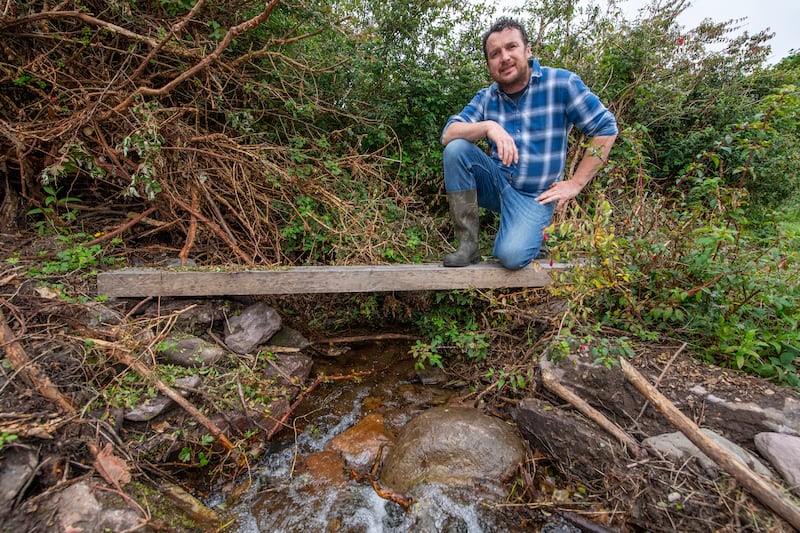
The organic farm of Tommy Reidy borders Brandon Bay Beach about 12km directly north. He has brought “farming for nature” to the next level by a mix of diversification and innovation. In his case, researchers come to study its habitats in a special area of conservation.
His 40 cattle are Dexters, a rare but increasingly popular breed, which places less demands on land and are hardy enough to overwinter outside. He monitors them using a drone that can travel 1.5km up on Stradbally Mountain.
He combines “conservation grazing” with crops of barley, peas and vetch. They require less fertiliser to thrive and are more drought resistant. A typical field allows for grazing, a protected area for orchids and a fenced-off pond to help natterjack toads, an endangered species, thrive and ease their way along a narrow canal from Castlegregory towards Brandon.
The farm is very exposed, but Reidy has managed to grow hedgerows and small trees to provide additional shelter for livestock. An old right of way running towards the sea has become a natural haven for a multitude of plants and wildlife, especially birds and insects.
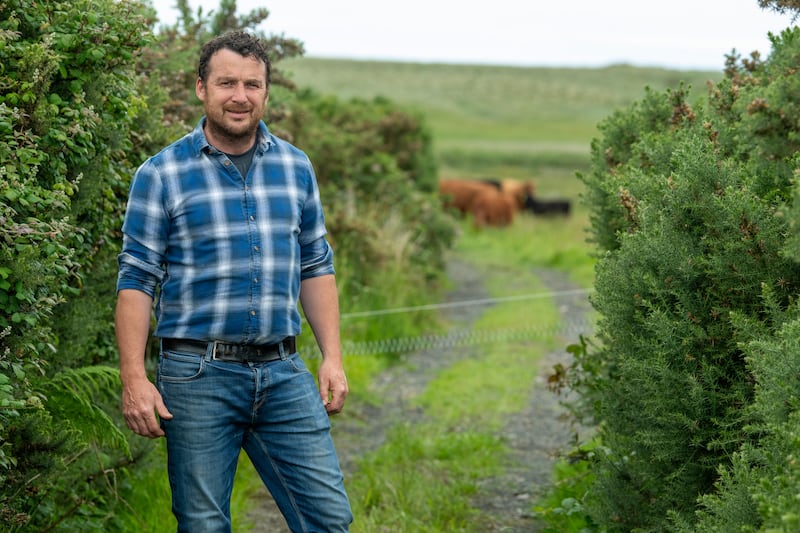
Reidy says in diversifying the enterprise he pursues a new project every year. For 2025, it’s “virtual fencing” using GPS-enabled collars on livestock and a digital mapping system to create invisible boundaries, keeping them on his land.
He has introduced the Japanese process of “bokashi”, fermenting manures under anaerobic conditions, in a bid to improve input efficiency, reduce reliance on artificial fertiliser and greatly reduce nitrogen/carbon emissions.
He knows “farming on its own is not going to make a living”, so he has an Airbnb and does farm tours.
“This is a really good model,” de Bhailís adds, “we don’t want small farms to be squeezed out.”
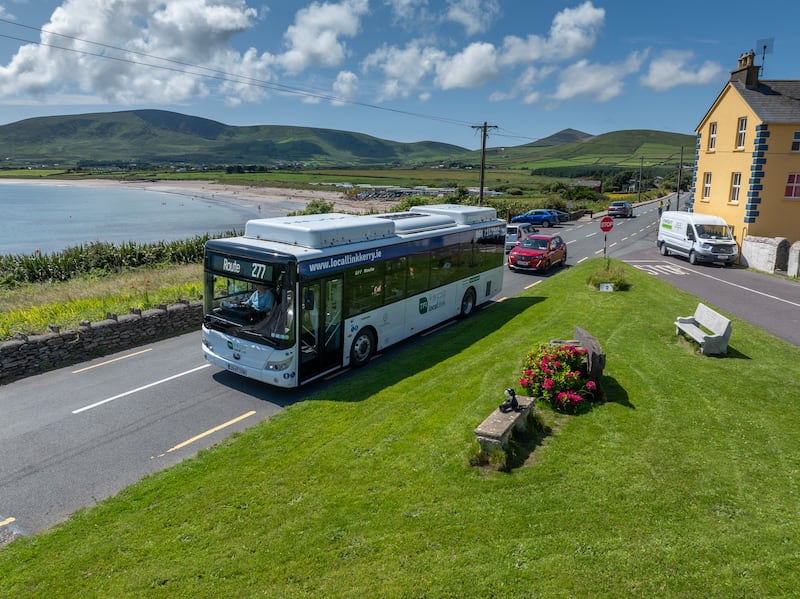
Rural areas are usually last to benefit from enhanced public transport services. Recognising the benefits of strengthened connectivity, Dingle Hub wants to ensure this is not the case in Corca Dhuibhne. Local Link Kerry bus service operates across the peninsula.
Easy-to-use apps, reasonably accurate timetables and making it simple are ensuring success. While some shelters and more timetable displays would help, Local Link has been the best thing ever for rural Ireland, de Bhailís says. It ties in with their aim to transition to “one car outside the door, to reverse the trend towards multi-car households”.
With ESB Networks, an “ambassador programme” was successfully run, where local people participated in trials involving electric vehicles and smart charging. Participants shared their experiences, promoting adoption of low-carbon technologies. With 15 participants, 95 per cent of the time EVs travelled less than 200km a day; range anxiety evaporated.
They plan to scale up cycling and walking on “quiet lanes”. The concept uses quieter roads dedicated for walkers, cyclists, horse riders and other vulnerable road users, offering protection from speeding traffic. With the help of Kerry Co Council, there are obvious places to start in Ventry and Dún Chaoin.
[ Ireland’s emissions fines could hit €26bn as decline in greenhouse gases slowsOpens in new window ]
Dingle Hub will collect relevant data, make the case with drawings and highlight benefits. This will “socialise the concept with people” with a view to ensuring easy passage through planning.
Encapsulating the essence of what Dingle Hub does is not easy, de Bhailís says. “We mobilise networks ... [this] provides a highly effective, low-cost way to leverage and extend the work of other stakeholders including State agencies.”
Its “scaling deep” approach to regional development “is rooted in the assets of place”, de Bhailís says. That is not just about sustainability but also “strengthening social resilience as much as economic assets”.
Their impacts chart is testament to delivery, whether it’s active people in their hub community (500 plus); new companies, deployment of emissions-reduction technology or nature-positive farming. It amounts to 890 kilowatts of installed solar PV across agriculture and tourism. Outcomes are assessed in frank “learnings” reports on what worked and what didn’t.
There is, however, a constant juggle between seeking the right blend of State funds, EU-fund projects, commercial services and philanthropic donations, she adds – and not overrelying on exchequer funding that could be pulled.
She hopes offsetting for Irish companies becomes easier in backing Irish projects that build resilience, “social wealth” and help communities adapt for climate inevitabilities.
They know longevity is better than rushing in and are always concerned about overreliance on volunteerism, which is often burdened with “the huge bureaucracy of funding applications”.
Academics are already doing detailed research on factors that have transformed much of this largely-rural region, with a view to the complex mix being applied elsewhere.
As for the X factor, people from Corca Dhuibhne are “unashamedly proud”, one local suggests. The “peninsula mindset” exists, voluntary commitment is easily sourced, helped by love of the Irish language.
In exploiting its distinct characteristics, some question whether the Dingle transition can be replicated elsewhere. The SEAI thought differently. It recently made Dingle Hub “county mentors” for the rest of Kerry. By any yardstick, its success metrics make the case for its approach to be applied far beyond the county.
Dingle Hub believes it has become “an exemplar for rural and community innovation and transition”. Yet it would be the first to say this is not the perfect recipe and its approach should not be simply helicoptered in. It should be widely deployed but adapted to local needs of other places.

